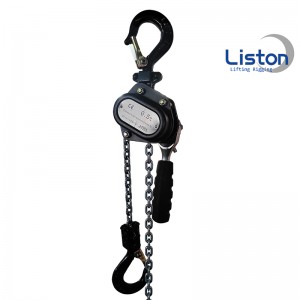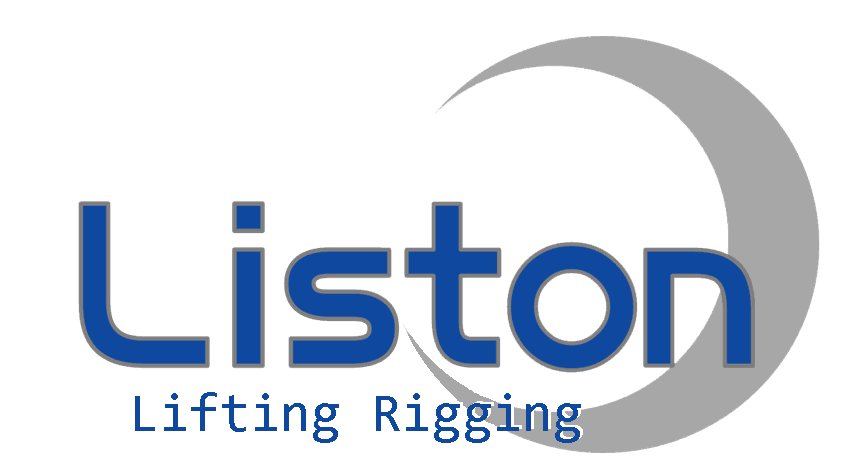
Lever hoists are an essential tool in various industries including construction, manufacturing and maintenance. They are designed to lift, lower and pull heavy objects with ease and precision. Lever hoists are compact, portable and easy to use, making them a versatile solution for a variety of lifting and towing applications. In this article, we'll explore the features, benefits, and applications of lever hoists and provide tips for safe and efficient operation.
Features of Lever Hoist
Lever hoists, also known as ratchet lever hoists or handy hoists, are designed with a lever handle for operating the hoist. They come in a variety of lifting capacities, from a few hundred pounds to several tons, making them suitable for both light and heavy lifting tasks. Lever hoists typically consist of a durable housing, a lifting chain or wire rope, and a ratchet and pawl mechanism for raising and lowering the load.
One of the key features of lever hoists is their compact, lightweight design, which makes them easy to transport and operate in tight spaces. They are also equipped with a freewheel mechanism for quick and easy connection to the load, and a load brake that provides precise control during lifting and lowering operations. In addition, the lever hoist is designed with a safety latch on the hook to prevent accidental detachment of the load.
Advantages of Lever Hoist
Lever hoists offer several advantages that make them the first choice for lifting and hauling applications. One of the main advantages of a lever hoist is its versatility. They can be used in a variety of environments, including construction sites, workshops, warehouses and maintenance facilities. Its compact size and portability make it ideal for applications where space is limited or mobility is required.
Another advantage of lever hoists is their ease of use. Lever-style handles provide mechanical advantages, allowing the operator to lift or pull heavy objects with ease. This makes the lever hoist an efficient and ergonomic solution for manual lifting tasks. Additionally, lever hoists are designed for precise load control, allowing for smooth and controlled lifting and lowering operations.
Lever hoists are also known for their durability and reliability. They are built to withstand the rigors of heavy-duty use and can handle demanding lifting and towing tasks. With proper care and maintenance, a lever hoist can provide many years of reliable service, making it a cost-effective investment for businesses and organizations.
Application of Lever Hoist
Lever hoists are widely used in various industries. In the construction industry, lever hoists are commonly used to lift and position heavy materials such as steel beams, concrete forms, and machinery. They are also used in tensioning and pulling applications such as securing cables and ropes.
In manufacturing and maintenance facilities, lever hoists are used to lift and position equipment, as well as perform maintenance and repair tasks. They are also used in pulling and tensioning applications such as aligning and adjusting machinery and components. Lever hoists are also used in the transportation and logistics industry for loading and unloading goods, as well as for securing and tensioning loads during transportation.
Tips for safe and efficient operation
When using a lever hoist, it is important to follow proper safety practices to ensure safe and efficient operation. Here are some tips for using a lever hoist safely:
1. The hoist should be inspected before each use to ensure that it is in good working condition. Check for any signs of damage or wear and make sure all components are functioning properly.
2. Use the appropriate crane to perform the specific lifting or towing task. Make sure the hoist's lifting capacity is sufficient to lift or pull the load.
3. Make sure the load is properly secured and balanced before lifting or pulling. Use appropriate rigging equipment, such as slings or hooks, to attach the load to the hoist.
4. The hoist operates within the rated lifting capacity range to avoid overloading. Never exceed the hoist's maximum lifting capacity.
5. Use the lever handle to operate the hoist smoothly and in a controlled manner. Avoid rapid or sudden movements that may cause the load to swing or move unexpectedly.
6. Keep the area around the hoist clear of obstructions and personnel during lifting and towing operations. Make sure there is enough space to lift or pull the load safely.
7. Follow the manufacturer's instructions and guidelines for proper use and maintenance of the lever hoist. This includes regular inspections, lubrication and any necessary adjustments or repairs.
By following these tips, operators can ensure safe and efficient use of lever hoists, minimizing the risk of accidents and injuries.
In conclusion, a lever hoist is a versatile and essential tool for lifting and pulling heavy objects in a variety of applications. Its compact and portable design, ease of use and precise load control make it a valuable asset in industries such as construction, manufacturing and maintenance. By understanding the features, benefits, and applications of lever hoists and following proper safety practices, operators can maximize the efficiency and safety of their lifting and hauling operations. Lever hoists are a reliable and cost-effective solution for businesses and organizations that require a versatile and durable lifting and pulling tool.
Post time: May-13-2024
